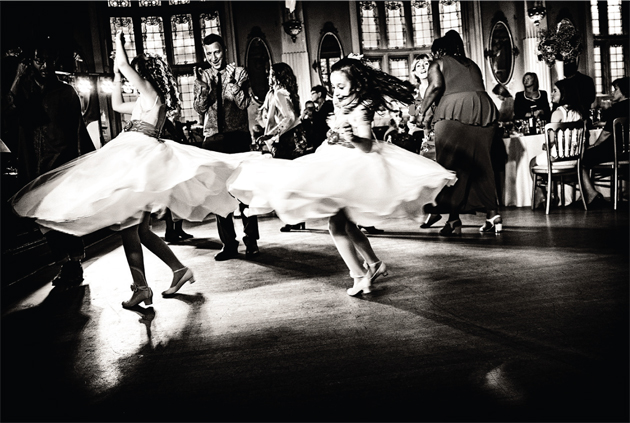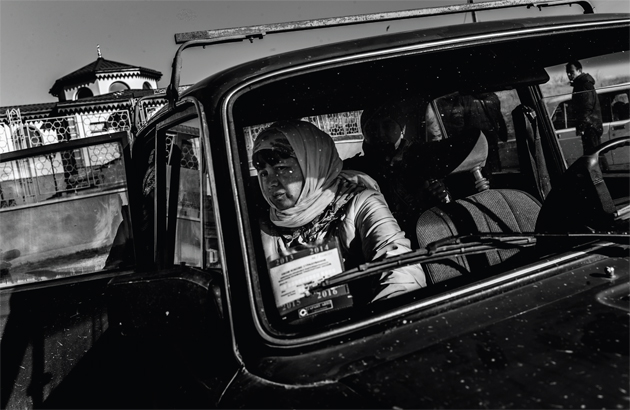The last two years have welcomed significant developments and innovations in compact, high-end non-DSLR cameras which rival the features, technology and image quality of current DSLRs. Christopher Quyen provides an overview of some of the recent offerings and talks to pro shooters to see what gear is now making its way into their professional kits.
Brains over bulk: does size really matter?
With the professional market welcoming more compact high-end non-DSLR cameras, photographers are being brought back to the days where their cameras would feel like an extension of their arm rather than a DSLR kettlebell workout that would guarantee you muscular definition (and pain) in your fingers, forearms and biceps.

Over the last two years, brands such as Fuji, Leica, Panasonic, Nikon, Sony, Olympus and Canon have unveiled innovative products in the mirrorless and rangefinder segments that come back to a nostalgic, traditional camera design reminiscent of 1980s cameras, like the Nikon FM or Olympus OM1, without too many compromises to features and image quality. Australian photographer and winner of a 2005 Walkley Award and Nikon Photographer Choice Award for her photo book of the Martu people, Conversations with the Mob, Megan Lewis, shoots with a 16.3 megapixel Fujifilm X-T1. “I used to feel really depressed about having to pick up a DSLR because I didn’t want to be burdened with something so heavy. For me it really changed my life,” she says. “The camera [XT-1] brings me back to the first time I ever picked up a camera; that excitement that I found as a child in looking at the world differently returned to me.”
With more freedom to look at things and decide how to shoot them, Lewis has found her shooting style has changed. “My style of shooting has become a little more artistic, or abstract, because I’m not burdened by the psychological weight of a camera and, because of the film simulation modes, the images are so close to film if not even better,” she says. A sense of play, creativity and experimentation has emerged for many photographers using these cameras. British wedding photographer and winner of the Society of Wedding and Portrait Photographers (SWPP) Landscape Photographer of the Year award for a photo of the Tokyo skyline shot on a Fuji X-M1, Kevin Mullins, has also found the size and near-silent operation of the X-T1 and X100s to be an advantage. “I was recently commissioned to shoot a Caesarean birth and this was under the strict instructions of the surgeon that the camera noise and size not be a distraction. After shooting it with the X100S, the surgeon actually asked me if I’d even taken any images. Simply put, that whole shoot would not have been possible with a DSLR of any size or shape,” Mullins says. “I am also able to more easily blend in a crowd and act like a guest during wedding ceremonies I’m shooting.” However, sometimes size can have an undesired effect when you’re trying to convince people that you’re a professional photographer as found by Peter Wanny, who felt reluctant to transition from a DSLR to a 36.3 megapixel Sony A7R. “It’s funny that most people associate the size of your camera with how serious a photographer you are. I’ve had this camera mistaken for a compact camera, and yes even a film camera,” says Wanny.

These cameras also prove to be a light companion for travelling photographers, as Mark Galer found. He shoots with a 24.3 megapixel Sony A7 and a 12.2 megapixel A7S and travels extensively with his cameras. “Packing to travel on an airline that has a seven kilogram carry-on limit is a huge constraint for working photographers like myself, who don’t want to put their cameras into the checked baggage. Five Sony E-Mount lenses, two bodies and accessories in a lightweight backpack weighs in under this weight limit. I used to exceed the limit with a single DSLR and a couple of f/2.8 zooms,” he says.
Hiding in plain sight
For a photographer to capture honesty, they must do their best to ensure that a barrier does not exist between them and their subjects. Belgium photographer, Bert Stephani, shoots all his portraits and reportage work on a Fujifilm X-T1 and the X100s. “I use smaller cameras because stealth and intimacy are the most important advantages for me,” he says. “When I’m shooting portraits, a small camera is less of a barrier between me and my subjects. I like to create a degree of intimacy in my portraits and I find it a lot easier to establish a connection with my subject without a big DSLR between us,” Stephani says.

This shift in dynamics is always something to use to your advantage while working with a smaller camera. For the last two years, Stephani has attempted to capture the spirit and the determination of the Uplace-BMC Pro Triathlon Team. This year in January, he worked with the team during their training camp on the Spanish island of Lanzarote. “The client didn’t want the typical long lens sports photography. My small cameras and relatively short lenses forced me to build a relation with the athletes, which allowed me to create a unique series of images that got closer to capturing their passion.” Developing a unique vision and body of work with this camera has influenced people into trusting Stephani and his camera into their worlds. “I was able to start a long-term documentary project about the controversial subject of hunting in Belgium. The camera is my passport into a closed world that is not mine,” he says. “I made a big leap forward in my work by switching to a smaller system because I learned to shoot more consciously and think about what I want to say with my pictures,” Stephani says. For Spanish photographer and World Press Photo award winner, Guillem Valle, who shoots with a Leica M9 with a Summilux 35mm f/1.4, stealth and intimacy is something that he also came to value while shooting with a rangefinder during assignments for the New York Times or the Guardian. “I feel like it’s less aggressive and people accept you as a photographer much faster. The main advantage is that you might not look like a professional photographer which means you can keep a low profile. While I was in the Kurdish region of Syria, where’s there’s still some regime presence, I felt much safer working with a small camera because I could attract less attention and keep a much-needed low profile,” says Valle.
Stay sharp
While these cameras are smaller than their DSLR cousins, image quality is something that is not compromised as demonstrated by each of these photographers and their commercial use of high-end non- DSLRs. Furthermore, the electronic viewfinders (EVF) have been found to be an important factor in ensuring that each photographer’s images are extra sharp and remain true to the eye. While professional photographers have initially found the EVF on mirrorless cameras to be off-putting after becoming so accustomed to the optical viewfinders of DSLRs, the EVF poses an important advantage by allowing the photographer to get a better visual of the information processed on camera such as exposure and white balance, in real-time. In other words, the photographer is able to see what the camera sees. For Steve Morenos, who shoots with a Sony A7R, using EVFs have become an important aspect of his work. “Critical to much of my work is the ability to magnify the image in the viewfinder to get my focus razor sharp. I simply could not do these fine-focus adjustments with traditional viewfinders of the past. It’s crisp, bright and what you see is what you get,” Morenos says. The rapidly improving quality and technical features of high-end non-DSLR cameras is impressive, and they do raise the question of whether or not DSLRs will still remain as the professional photographer’s primary tool of the trade. Many of the photographers interviewed indicated that non-DSLR cameras almost match, if not succeed, the image quality of DSLRs.
A little look into a big future
As we look into the future of these cameras, it’s becoming increasingly likely that we will see more professional photographers with compact, high-end non-DSLR cameras in their arsenal. But what developments would professional photographers like to see in these cameras? Most of these wishes lie in the realm of a full-frame system, faster AF speed and extended battery life. However, Bence Máté has a different hope. Winning multiple awards including the Veolia Environnment Wildlife Photographer of the Year and the Eric Hosking Award, the Hungarian nature photographer shoots some of his work with a 16.05 megapixel Panasonic Lumix GH4, and says “the size of the equipment is amazing. I can hold a camera with a lens in each hand. Nature photography depends on luck, so the technical side of things should always be ready. When I started photography in 2006, it was really hard to get some action shots. In 2008, I thought that it would be nice to have video recording and photo at the same time. I think the future of photography is to have a continuous video because some motions are too fast to capture. Sometimes I use a high speed camera that takes 500 images per second, but I hope in a couple of years I’ll have a technique where I’ll just record a video and take a frame from it and be able to use it as a print. For me, the Lumix GH4 is a good start to this technique, and the 4K resolution is really cool,” he says. Ideally, Máté would like to see developments in video shooting shift from the standard 24 frames-per-second into anything between 100 to 150 frames-per-second. “Maybe in the future, nobody will shoot single images and everybody will be shooting videos,” says Máté.

There will most likely alway be a place for traditional DSLRs as the workhorse of professional photographers, but there’s no denying that high-end, non-DSLRs have ushered in a whole new playing field. And these new technologies are giving photographers a chance to bring play back to photography. The focus has now been pulled back to the creative dialogue between photographer and subject, with the camera in its basic design as a simple paintbrush. Now its up to photographers to focus on how far they can push their creative limits with these cameras.
Contacts
Mark Galer: www.markgaler.com
Megan Lewis:www.meganlewis.com.au
Bence Máté: www.matebence.hu
Steve Morenos: www.stevemorenos.com
Kevin Mullins: www.kevinmullinsphotography.co.uk
Bert Stephani: www.bertstephani.com
Guillem Valle: www.guillemvalle.net
Peter Wanny: www.peterwanny.com

